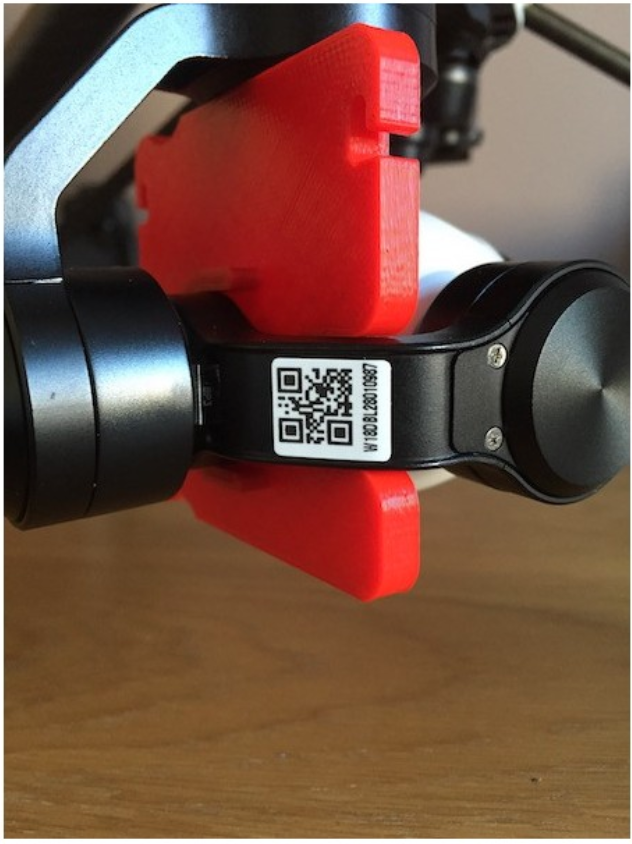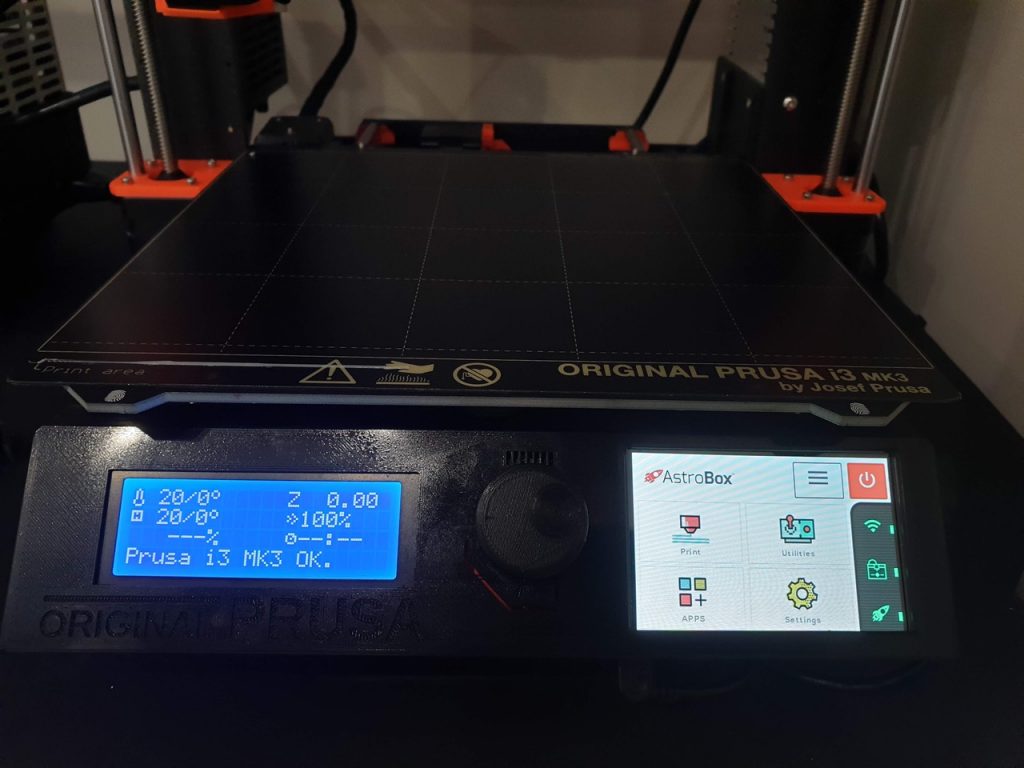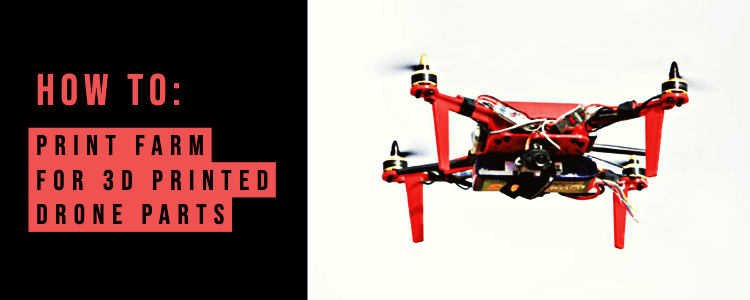I think it’s just about identifying a gap in the market and coming up with a design or product that could potentially fill that gap. 3D printing allows you to create products that don’t currently exist in the market
Neil Watts
Neil Watts is a 3D printing enthusiast who has turned his hobby into a business. His online store, Aero3D, sells custom accessories for drones to customers worldwide. Neil doesn’t have a background in design, but he’s taught himself to design parts with basic cad software.
In this interview, Neil tells us about:
- How he found an opportunity in custom drone parts and how other 3D printing enthusiasts can find market niches.
- How he finds clients without spending a penny on marketing.
- How he manages to run 13 printers simultaneously while still keeping his corporate job.
How did you get started?
“Years ago, I became a CAA certified drone pilot and I spent about two years flying drones. During that time, I got to know a lot of people that were also flying drones. Since they knew I also had an interest in 3D printing, they would say things like oh wouldn’t it be great if we could add a bracket to do this and that? or add something to put additional batteries to improve flight time?
So I decided to give it a go and I started to design parts for drones. I started with one 3D printer which turned into five 3D printers and five 3D printers turned into 13 3D printers as the request of parts and designs increased as my website got known.”
What was the first thing you sold?
“A very simple item. It was a gimbal lock that slides behind the camera and locks the camera to the gimbal preventing both gimbal and camera from getting damaged during transport or storage.”

What do you use to design your products?
“You are going to laugh at this but I design 90% of my products with Tinkercad, even ones that are quite complex. I’ve also designed stuff in Fusion360 but I keep going back to Tinkercad haha. I guess it works for me.”
How did you find your first clients?
“I started with a Facebook community. There are communities specific to DJI drones and thanks to being a commercial drone pilot, I built up a number of friends on the Facebook community. So I started putting pictures of this gimbal lock and it got to a point where people asked me where they could buy it. So I created a website, just for that one single product and I took it from there.
Currently, I don’t do any marketing other than supporting my projects on Facebook groups. I also have a presence on eBay, Etsy and Amazon. One of the issues I have is that I work full time in Corporate. This started as a sideline way of me paying for my 3D printers. It was just a hobby that turned into a little bit more than that, but this is still a hobby business.”
How do you manage and monitor your 3D printer fleet?

“I’m a technology lover and continuously having to go down to a printer to monitor it, to see if it was printing ok, to see if the temperatures were stable, etc, just became a bit of a pain. So I investigated ways to automate the whole process, not just the initial start of prints but also the monitoring of the print, knowing when the print is finished and really maximizing the efficiency of the technology.
One day I stumbled upon AstroPrint and I remember I thought wow! I love the look of this. I loved the simplified interface and that it gave me everything I needed without the complexity of dealing with different screens. What I love the most about astroprint is:
1. The ease of starting prints. I love having the ability to create a single print file and send it to multiple printers without having to switch out sd cards.
2. Management and monitoring. Probably too many times in the day my wife asks me what I’m doing on my phone again and I tell that I’m just checking the printers. I love to have a single view for all my printers and to see what percentage of completion they are. I also love the fact that I get immediately notified when a print is completed. AstroPrint just makes it easy.”

Do you see business opportunities for 3D printer hobbyists?
“Without a doubt. And not just drone parts. Any add-on thing that would improve a product or make it easier to use. I’ve not only proven that with drone parts but I’ve also found other opportunities in technology like selling accessories for Philips lights.
I think it’s just about identifying a gap in the market and coming up with a design or product that could potentially fill that gap. 3D printing allows you to create products that don’t currently exist in the market. When I made the gimbal lock, nobody was doing it. I noticed that people were asking why there wasn’t a lock that could secure the camera and that made me realize that there was a little niche in the market that I could fill.
Today everyone belongs to certain Facebook groups and so if there is a product group and someone says: why there is not a widget for doing this? Then, there you have an opportunity.”
Turning your 3D Printing Hobby into a Business
Neil is not the first person we’ve seen turning his 3D printing hobby into a business. Low-cost 3D printers are allowing people to start their own manufacturing business from home and the digital infrastructure is there for them to find customers.
If you found Neil’s story inspiring. Check out our post on How to Start an e-commerce Business with 3D Printers.

